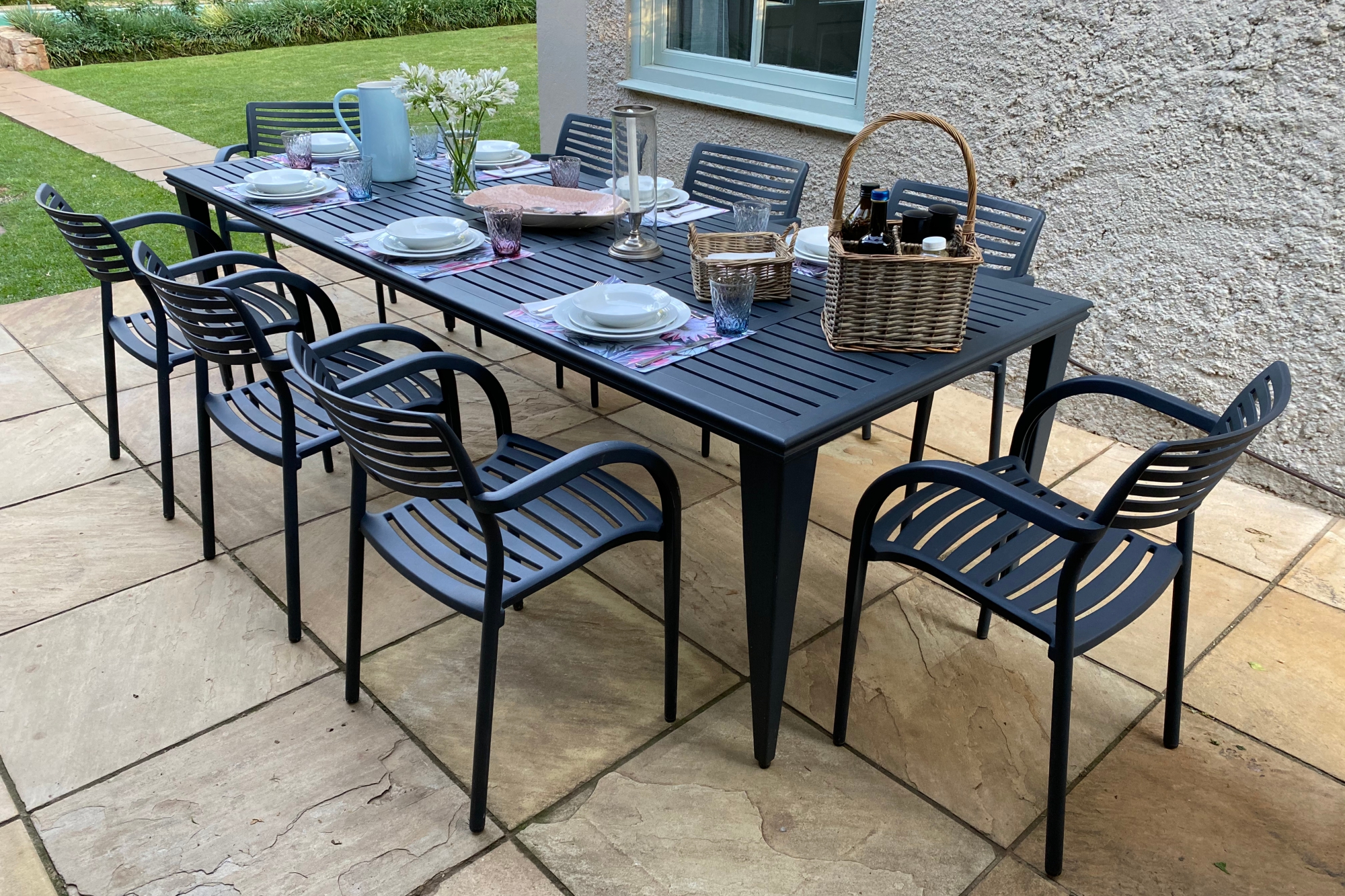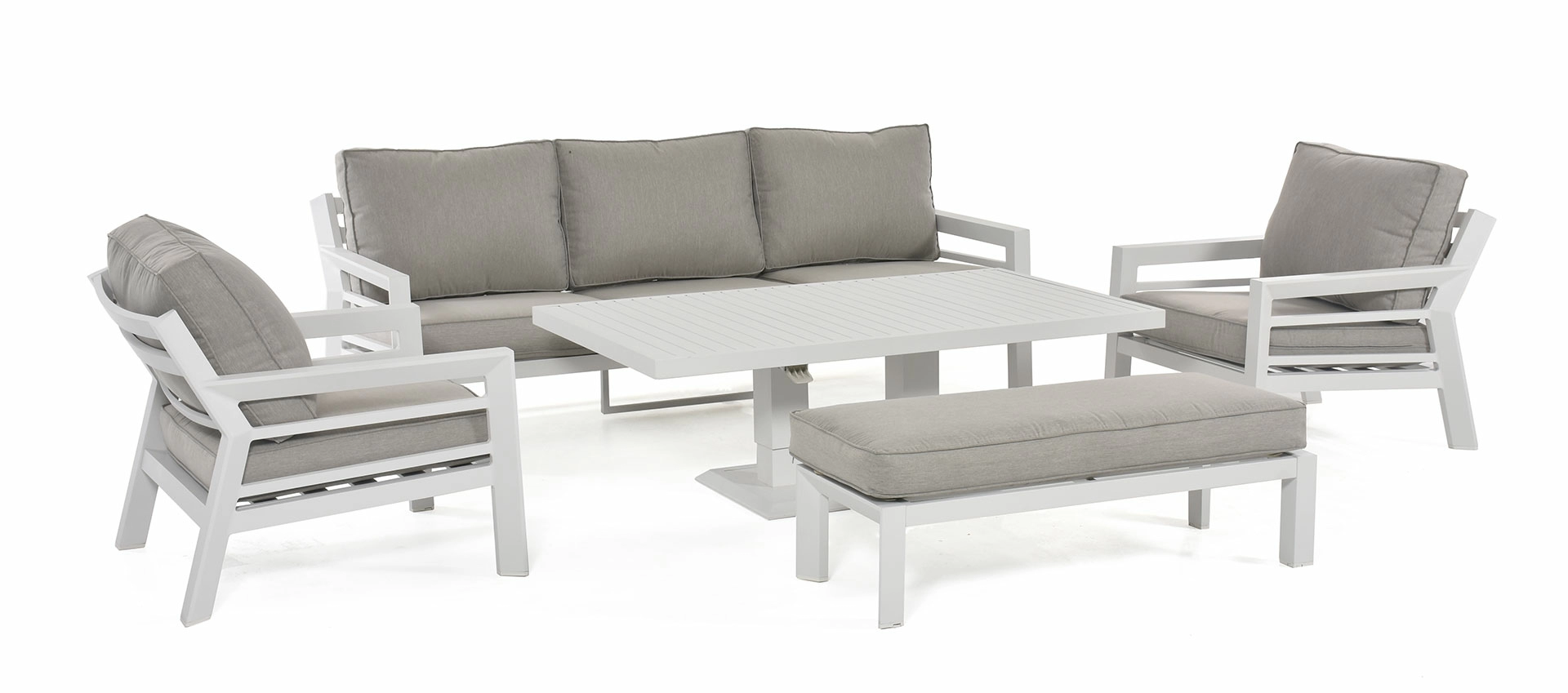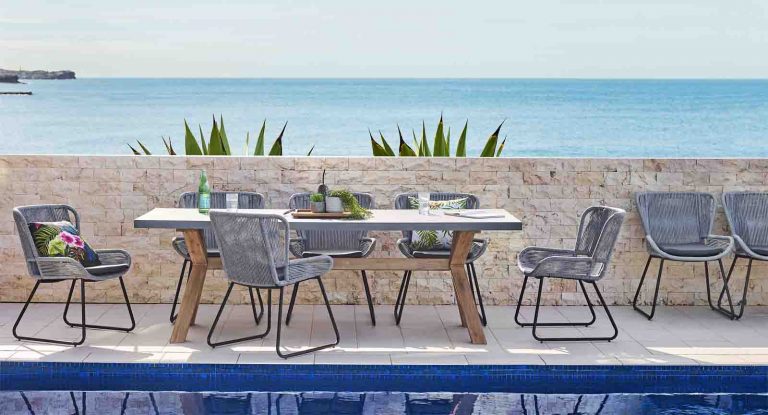Product Description
Product Description
Aluminium Outdoor Furniture Patio Garden Sofa Set Removable Aluminium Armrest and Back
| Size: |
| 2x corner sofa: 78x78x71H cm |
| 2x no arm sofa: 70x78x71H cm |
| 1x coffee table: 66x66x34.5H cm |
| Finish: |
| Aluminum frame with powder coating, |
| 8cm seat and back cushion, 210gsm yarn dyed polyeter fabric |
| packing: one set into 5 cartons |
| Loading Quantity: 43sets/40HQ |
Detailed Photos
This Modern Outdoor Furniture Set Square Shape 5 Pieces Sofa With White Aluminium Frame from HangZhou Lodestone is a luxurious outdoor aluminium corner set that not only oozes incredible comfort, but is also completely maintenance free. Even the deep seating, ‘All Weather’ quick dry cushions, in light green, can be left outside all year round. This superb garden set is made with high quality, rust free aluminium that is finely finished in a contemporary white powder-coating.
Company Profile
HangZhou LODESTONE IMPORT & EXPORT CO.,LTD. Started from 2016, a professional manufacturer and exporter of outdoor furniture and outdoor cushions in HangZhou, ZHangZhoug of China. Product range covering aluminium furniture, rattan furniture, steel, textilene furniture, outdoor cushions, furniture cover, umbrella and so on. We focus on providing the high quality products and service to every our customer and good reputation from Germany, UK, France, Poland, Norway, Israel, Canada, America and some other countries.
Our team has more than 12 years experience in outdoor furniture, We are fully aware of customer needs and pay highly attention to every step of the production. Efficient professional services and strict quality control which make our products well received by our customers worldwide.
Packaging & Shipping
FAQ
| 1. What is your MOQ? |
| Normally whole container shipping, some are 50pc, some are 20pc. LCL is acceptable. |
| 2. What is your payment term? |
| T/T deposit or L/C at sight |
| 3. What is your delivery time? |
| 40-50 days in CHINAMFG season from October to April. |
| 30-40 days in low season from May to September. |
| 4. What are your warranty terms? |
| 24 month |
| 5. Does the product support customization? |
| Yes, we can make the product according to your size and color. |
| 6. How’s the package? |
| standard package for export. Special mail order packing is available . |
| 7. What’s your sample policy? |
| We accept the sample order. However the customers have to pay the sample cost and shipping cost. The samples need 15 days to delivery. |
| 8. What’s your shipping term? |
| FOB HangZhou/ZheJiang |
Thanks for your attention! Welcome to your inquiry.
We will give you prompt reply.
/* March 10, 2571 17:59:20 */!function(){function s(e,r){var a,o={};try{e&&e.split(“,”).forEach(function(e,t){e&&(a=e.match(/(.*?):(.*)$/))&&1
| Material: | Fabric |
|---|---|
| Frame Material: | Aluminium |
| Style: | Modern |
| Samples: |
US$ 800/Set
1 Set(Min.Order) | Order Sample |
|---|
| Customization: |
Available
|
|
|---|
.shipping-cost-tm .tm-status-off{background: none;padding:0;color: #1470cc}
|
Shipping Cost:
Estimated freight per unit. |
about shipping cost and estimated delivery time. |
|---|
| Payment Method: |
|
|---|---|
|
Initial Payment Full Payment |
| Currency: | US$ |
|---|
| Return&refunds: | You can apply for a refund up to 30 days after receipt of the products. |
|---|

Are there any emerging technologies or innovations in the production of aluminium parts?
Yes, there are several emerging technologies and innovations in the production of aluminium parts. Here’s a detailed explanation:
1. Additive Manufacturing (3D Printing):
– Additive manufacturing, also known as 3D printing, is revolutionizing the production of aluminium parts. This technology allows for the creation of complex geometries and intricate designs that are difficult or impossible to achieve with traditional manufacturing methods. 3D printing of aluminium parts offers advantages such as reduced material waste, faster production times, and the ability to create lightweight structures with optimized performance.
2. Advanced Forming Techniques:
– Advanced forming techniques, such as superplastic forming (SPF) and incremental sheet forming (ISF), are being applied to aluminium parts production. These techniques enable the shaping of aluminium sheets into complex and lightweight structures. Superplastic forming allows for the precise forming of intricate shapes at elevated temperatures, while incremental sheet forming involves the incremental deformation of the sheet using a CNC-controlled tool.
3. Hybrid Manufacturing:
– Hybrid manufacturing combines additive manufacturing with traditional subtractive processes, such as milling or machining. This approach allows for the production of aluminium parts with complex geometries and fine details using additive manufacturing, while the subtractive processes are used for finishing, precision, or achieving specific surface qualities. Hybrid manufacturing offers a more versatile and efficient production method for aluminium parts.
4. Improved Alloys:
– Research and development efforts are focused on developing improved aluminium alloys with enhanced properties. These alloys may exhibit improved strength, corrosion resistance, lightweight characteristics, and other desirable attributes. For example, there is ongoing work in developing high-strength aluminium alloys that can rival the strength of some steels while maintaining their lightweight advantages.
5. Recycling and Circular Economy:
– The recycling and circular economy approach is gaining momentum in the production of aluminium parts. Innovations in recycling technologies allow for the efficient recovery and reuse of aluminium scrap and waste materials. This not only reduces the reliance on primary aluminium production but also minimizes environmental impact and conserves resources. Recycled aluminium can be used in various applications, including the production of new aluminium parts.
6. Smart Manufacturing and Industry 4.0:
– The integration of smart manufacturing technologies, such as Internet of Things (IoT), data analytics, and automation, is transforming the production of aluminium parts. These technologies enable real-time monitoring, process optimization, predictive maintenance, and improved overall efficiency. Industry 4.0 concepts are being applied to aluminium manufacturing, leading to increased productivity, quality control, and cost-effectiveness.
7. Surface Treatments and Coatings:
– Advancements in surface treatments and coatings are enhancing the performance and durability of aluminium parts. New coatings are being developed to provide improved corrosion resistance, wear resistance, friction reduction, and thermal management properties. These treatments and coatings can enhance the lifespan, functionality, and aesthetics of aluminium parts in various applications.
These emerging technologies and innovations in the production of aluminium parts offer exciting possibilities for improved performance, efficiency, and sustainability. As these technologies continue to develop and mature, they are expected to have a significant impact on the manufacturing industry and the applications of aluminium parts.

Can I find tutorials or guides on DIY projects using aluminium parts for home improvement?
Yes, you can find tutorials and guides on DIY projects using aluminium parts for home improvement. Here’s a detailed explanation:
1. Online DIY Websites and Blogs:
– Online DIY websites and blogs often provide a wealth of tutorials and guides on various home improvement projects that involve aluminium parts. These resources may include step-by-step instructions, images, videos, and tips for working with aluminium. Websites like DIY Network, The Spruce, and This Old House offer comprehensive guides and project ideas for DIY enthusiasts looking to incorporate aluminium parts into their home improvement projects.
2. YouTube:
– YouTube is an excellent platform for finding DIY tutorials and guides on using aluminium parts for home improvement. Many DIY creators and channels share detailed videos demonstrating the process of working with aluminium, including cutting, shaping, joining, and finishing techniques. You can search for specific keywords like “DIY aluminium projects” or “aluminium home improvement” to find relevant video tutorials.
3. Online Forums and Communities:
– Online forums and communities dedicated to DIY projects and home improvement are valuable sources of information and guidance. Websites such as DIYChatroom and Home Improvement Stack Exchange have active communities where you can ask questions, seek advice, and find tutorials or guides shared by fellow DIY enthusiasts who have experience working with aluminium parts for home improvement.
4. Manufacturer and Supplier Websites:
– Some aluminium manufacturers and suppliers provide resources and guides on their websites that can assist in DIY projects using aluminium parts. These resources may include design ideas, installation instructions, and maintenance tips. Exploring the websites of aluminium manufacturers or suppliers can provide valuable insights and recommendations for incorporating aluminium parts into your home improvement projects.
5. Books and Publications:
– Books and publications focused on DIY, home improvement, or metalworking may feature chapters or sections dedicated to working with aluminium. These resources can provide in-depth knowledge, project ideas, and step-by-step instructions for using aluminium parts in various home improvement applications. Checking local libraries, bookstores, or online retailers can help you find relevant books on DIY projects involving aluminium parts.
When using tutorials or guides for DIY projects using aluminium parts, it’s important to prioritize safety and follow proper handling procedures. Always wear appropriate protective gear, use the correct tools and equipment, and adhere to safety guidelines provided in the tutorials or guides. Additionally, ensure that you have the necessary skills and knowledge to work with aluminium or seek professional assistance when needed.

Can aluminium parts be anodized for improved corrosion resistance?
Yes, aluminium parts can be anodized to enhance their corrosion resistance. Here’s a detailed explanation:
Anodizing is an electrochemical process that creates a protective oxide layer on the surface of aluminium parts. This oxide layer, known as an anodic coating, not only provides improved corrosion resistance but also offers other benefits such as increased hardness, enhanced wear resistance, and improved aesthetic appearance.
The anodizing process involves immersing the aluminium part in an electrolyte bath and passing an electric current through it. The aluminium part acts as the anode (positive electrode) in the electrolytic cell, while a cathode (negative electrode) is also present in the bath. The electric current causes oxygen ions from the electrolyte to react with the aluminium surface, forming a thick and durable anodic oxide layer.
The thickness and properties of the anodic coating can be controlled during the anodizing process, allowing for customization based on the desired application. The anodic coating typically consists of aluminum oxide, which is highly stable and provides excellent corrosion resistance. The thickness of the anodic coating can range from a few microns to tens or even hundreds of microns, depending on the specific requirements.
Benefits of anodizing aluminium parts for improved corrosion resistance:
1. Enhanced Protection: The anodic coating acts as a barrier between the aluminium substrate and the external environment, protecting the part from corrosion caused by moisture, chemicals, and other corrosive substances.
2. Increased Durability: Anodizing can significantly improve the hardness and wear resistance of aluminium parts, making them more resistant to scratches, abrasion, and general wear and tear.
3. Low Maintenance: Anodized aluminium parts require minimal maintenance compared to bare or untreated aluminium. The anodic coating is stable and does not require additional coatings or treatments to maintain its corrosion resistance properties.
4. Aesthetic Versatility: Anodizing allows for a wide range of color options and finishes, providing both decorative and functional benefits. The anodic coating can be dyed in various colors or left natural for a metallic appearance, offering versatility in design and visual appeal.
5. Environmental Sustainability: Anodizing is an environmentally friendly process as it does not involve the use of toxic materials or produce harmful by-products. Additionally, anodized aluminium parts are highly recyclable and can be reused or repurposed without compromising their corrosion resistance properties.
It’s worth noting that the anodizing process and the resulting properties of the anodic coating can vary depending on factors such as the specific alloy composition of the aluminium, the anodizing method used, and the desired outcome. It’s important to consult with an experienced anodizing service provider or refer to industry standards and guidelines to ensure the desired level of corrosion resistance is achieved for the specific application.
editor by CX 2024-01-24